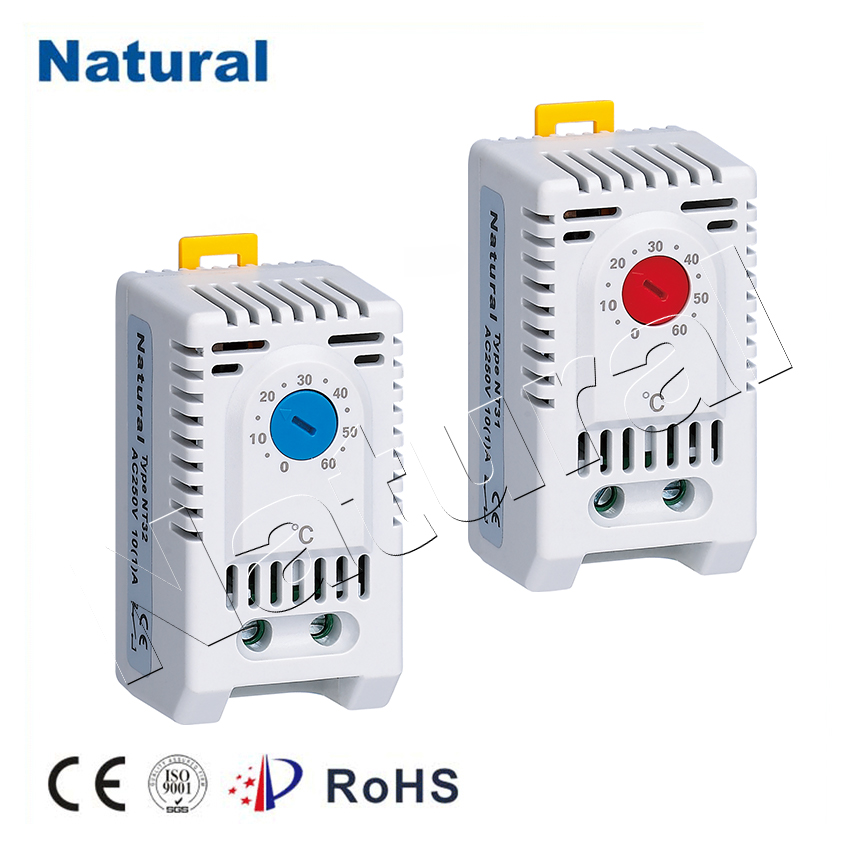In modern industrial and residential settings, maintaining precise temperature control is essential for optimal functioning and comfort. One technology that has emerged as a reliable solution is the DIN rail thermostat. This compact and versatile device plays a pivotal role in various applications, from controlling heating and cooling systems to ensuring the proper operation of machinery. In this article, we will explore the features and benefits of DIN rail thermostats.

Overview of DIN Rail Thermostats DIN rail thermostats are advanced temperature control devices designed to be mounted on DIN rails, commonly used in electrical and control panels. These thermostats offer a host of features that enable efficient temperature regulation in a wide range of environments. The DIN rail mounting system allows for easy integration into existing setups, making them a popular choice among engineers and system integrators. Key Features and Benefits Precise Temperature Control: DIN rail thermostats are equipped with accurate temperature sensors that ensure precise control over heating and cooling processes. This level of accuracy is vital in scenarios where even slight temperature fluctuations can impact the efficiency and safety of operations. User-Configurable Settings: These thermostats often come with user-friendly interfaces that allow operators to configure various settings, such as temperature thresholds, hysteresis, and control modes. This flexibility ensures that the thermostat can be tailored to the specific requirements of different applications. Energy Efficiency: DIN rail thermostats contribute to energy savings by maintaining temperatures within predefined ranges. They can be programmed to switch off heating or cooling systems once the desired temperature is reached, preventing unnecessary energy consumption. Remote Monitoring and Control: Many modern DIN rail thermostats are equipped with communication capabilities, such as Wi-Fi or Modbus. This allows operators to remotely monitor temperature conditions and adjust settings in real time, enhancing overall system management and troubleshooting. Compact Design: The compact size of DIN rail thermostats makes them suitable for installations where space is limited. Their unobtrusive design enables them to be seamlessly integrated into control panels and machinery. Reliability and Durability: Built to withstand harsh industrial environments, DIN rail thermostats are often designed with ruggedness in mind. They can operate reliably even in conditions involving dust, moisture, and varying temperatures. Versatility: These thermostats find applications in a diverse range of industries. From HVAC systems in commercial buildings to temperature-sensitive processes in manufacturing, their adaptability is a major advantage. Applications Industrial Automation: DIN rail thermostats are crucial in industrial automation, regulating temperatures to ensure machinery functions optimally and avoiding overheating that could lead to breakdowns or even accidents. HVAC Systems: In commercial and residential buildings, these thermostats maintain comfortable indoor temperatures, helping to reduce energy consumption and costs. Food Industry: Temperature control is vital in food processing and storage. DIN rail thermostats help maintain proper conditions in refrigeration units and ovens. Greenhouses and Agriculture: For precise plant growth, these thermostats control temperature and humidity in greenhouses, fostering ideal conditions for crops. Conclusion DIN rail thermostats have revolutionized temperature control across various industries. Their precision, adaptability, and energy efficiency make them indispensable tools for maintaining optimal operating conditions. Whether in industrial settings or everyday environments, the role of DIN rail thermostats in enhancing efficiency and comfort cannot be overstated. As technology continues to advance, we can expect these devices to become even more sophisticated, contributing to a more controlled and sustainable future.